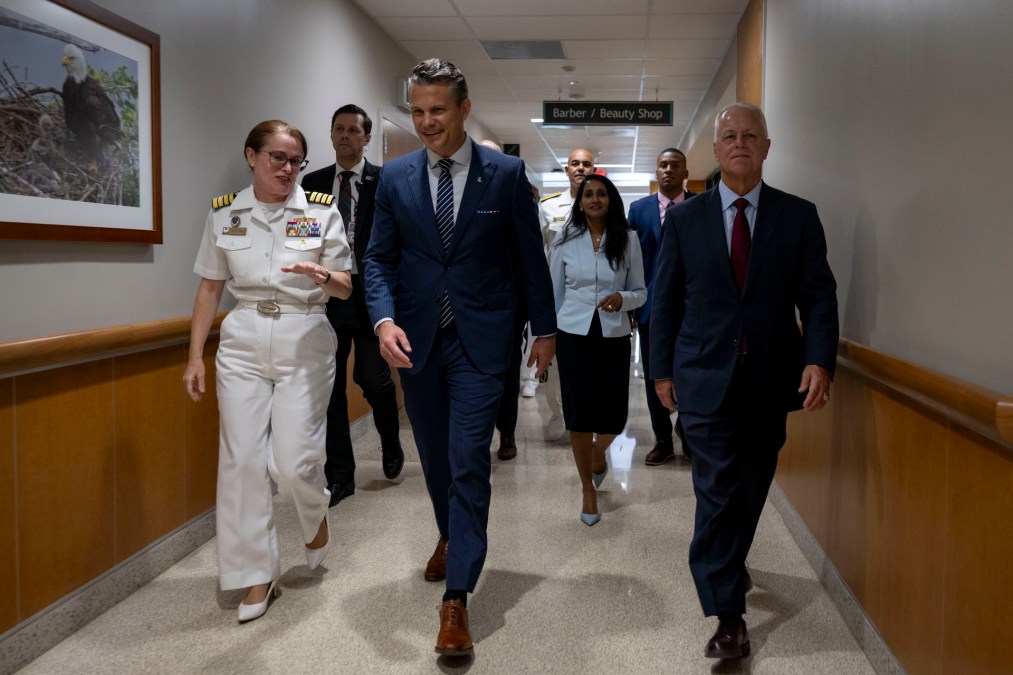Pentagon leadership directs DOD civilian employee supervisors to expedite removal of underperformers

Pentagon leaders are moving to further cull the department’s civilian workforce by targeting underperformers for removal.
In a new directive issued this week, Undersecretary of Defense for Personnel and Readiness Anthony Tata laid out processes for weeding out employees who are deemed to be not up to snuff.
“Supervisors and human resources (HR) professionals are directed to act with speed and conviction to facilitate the separation from Federal service of employees performing unsuccessfully,” Tata wrote in a memo to senior Pentagon leadership, combatant commanders, and DOD agency and field activity directors.
Justifications for removal include “consistent failure” to meet deadlines, quality standards, or productivity targets; inability to perform key tasks; and “repeated errors or omissions that disrupt operations or harm agency objectives,” according to an attachment to the memo.
“Minor or isolated performance issues (e.g., occasional mistakes) typically do not suffice unless they accumulate into a pattern of significant impact,” it noted.
Supervisors have been directed to team with HR officials to issue written notices of proposed removal to low performers detailing their deficiencies.
Targeted employees will be given seven calendar days to respond orally or in writing to the notice, “or as consistent with collective bargaining agreements,” the memo explained, noting that workers can request copies of all materials that informed the issuance of the notices and have the right to be represented, “consistent with” DOD component procedures.
“The deciding official, who shall be no more than two levels above the supervisor in the reporting chain or who may be outside of the rating chain, as designated, will review the detailed notice and the employee’s response and deliver a written decision within 30 calendar days of the written notice of proposed removal,” Tata wrote.
“Unlike removals pursuant to chapter 43 of title 5, U.S.C., performance improvement plans (also known as PIPs) are not required. Suspensions should not substitute for removal to the extent removal is warranted. Supervisors must consider all past performance deficiencies and past corrective and/or disciplinary actions,” he added.
However, Tata noted that all labor obligations must be satisfied prior to any changes in the conditions of employment of bargaining unit employees.
His office is expected to intervene in certain cases, and officials tasked with making these types of decisions may face additional scrutiny if they are seen as dragging their feet or not being aggressive enough.
If a deciding official doesn’t uphold a proposed removal or fails to provide a final decision within the 30-calendar day window, the case file will be forwarded to the Pentagon’s Personnel and Readiness directorate, which will “review submitted cases for trends with timeliness delays and/or supporting documentation, and to assess potential supervisor and/or HR training needs,” per the memo.
Heads of DOD components “must hold managers at all levels accountable for addressing poor employee performance,” Tata wrote.
Employees who receive a notice about their proposed removal may be offered voluntary separation incentive payments, voluntary early retirement authority, or an individualized Deferred Resignation Program.
The department made similar offerings earlier this year to encourage tens of thousands of DOD civilians to voluntarily leave DOD. Those personnel cuts were part of the Trump administration’s DOGE efforts.
Offering incentives for voluntary departures of employees deemed to be underperforming, is intended to “facilitate efficient employee removals,” according to Tata’s memo.
Tata’s directive came on the same day that Defense Secretary Pete Hegseth issued a slew of memos, including one on modern workforce management.
“We recently surveyed our civilian workforce. We heard loud and clear that personnel policies must better reflect our high-performance culture. This requires reforming how we treat both top and bottom performers. Winning organizations optimize the workforce spectrum,” he wrote, noting a need to “demystify” the removal process and give managers more guidance on how to separate low performers.
“Complex offboarding creates cultural drag that hurts morale across the Department and hinders our mission,” Hegseth wrote.






